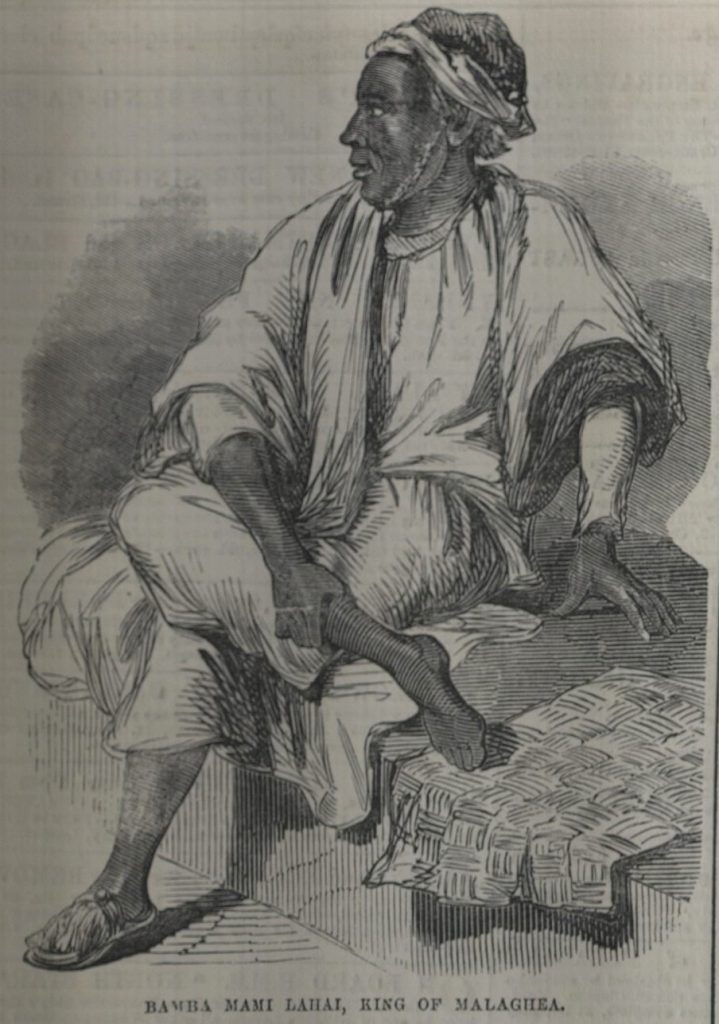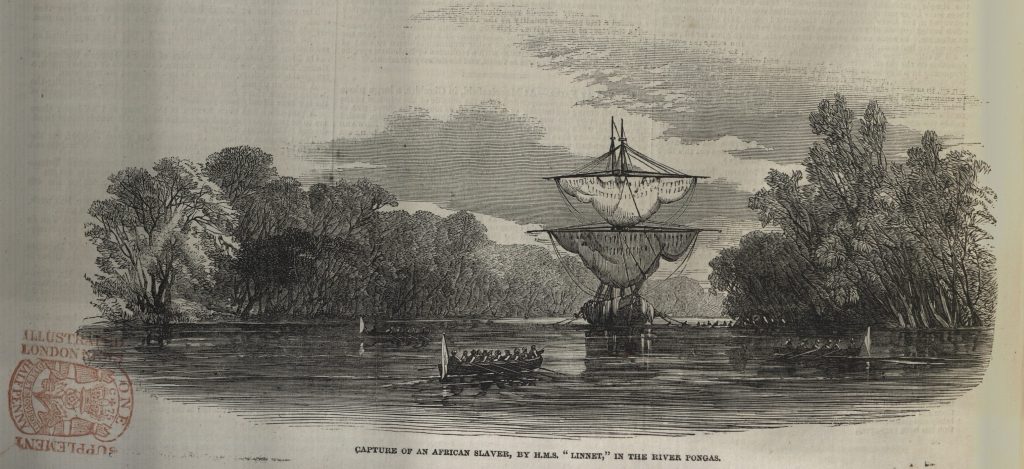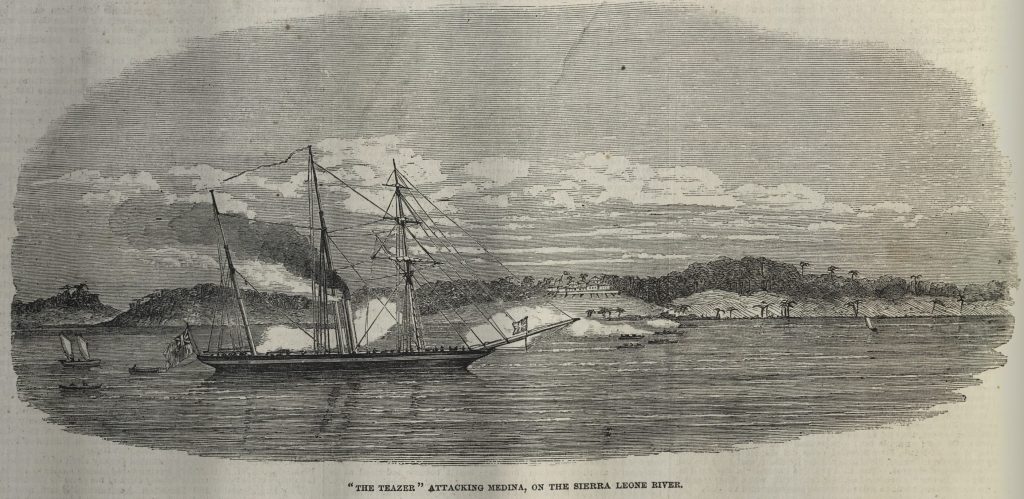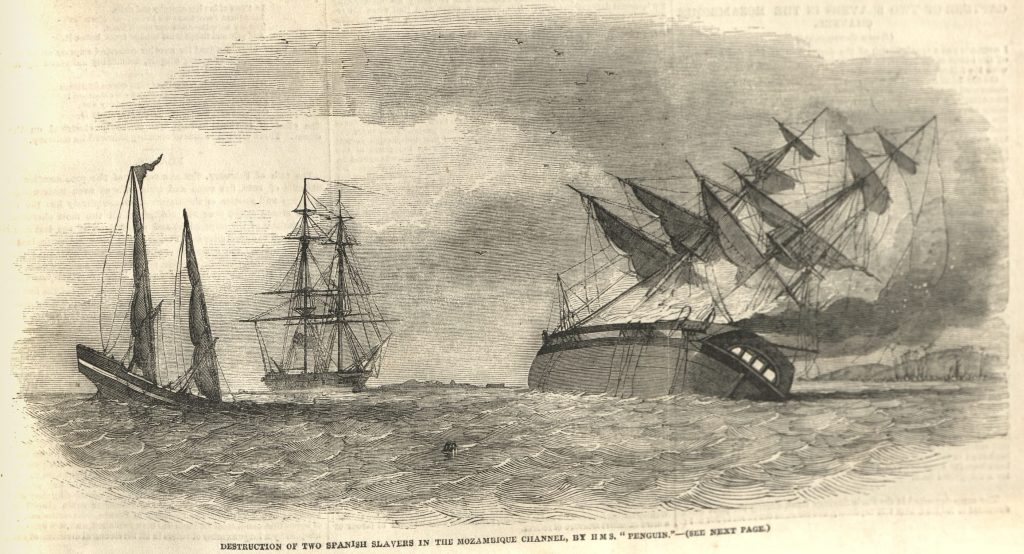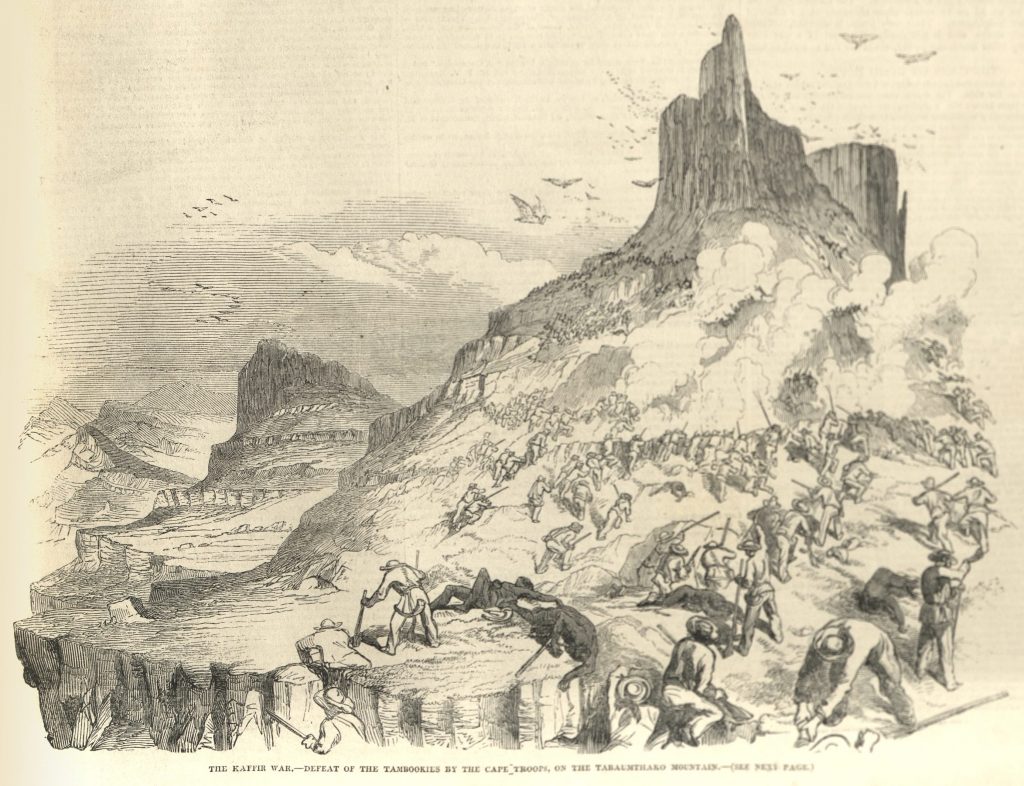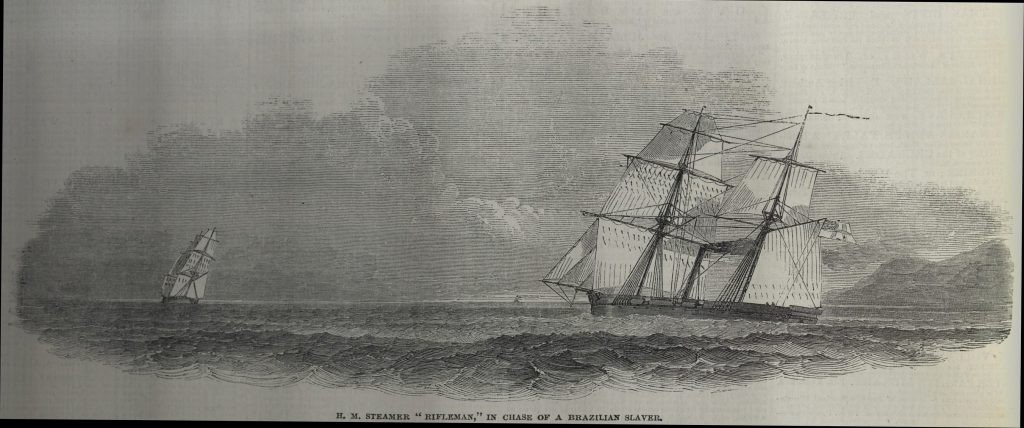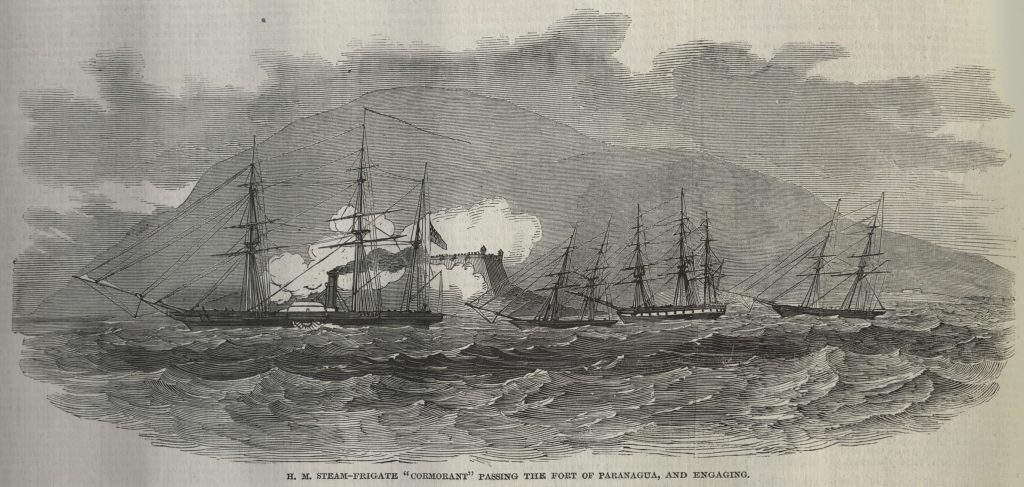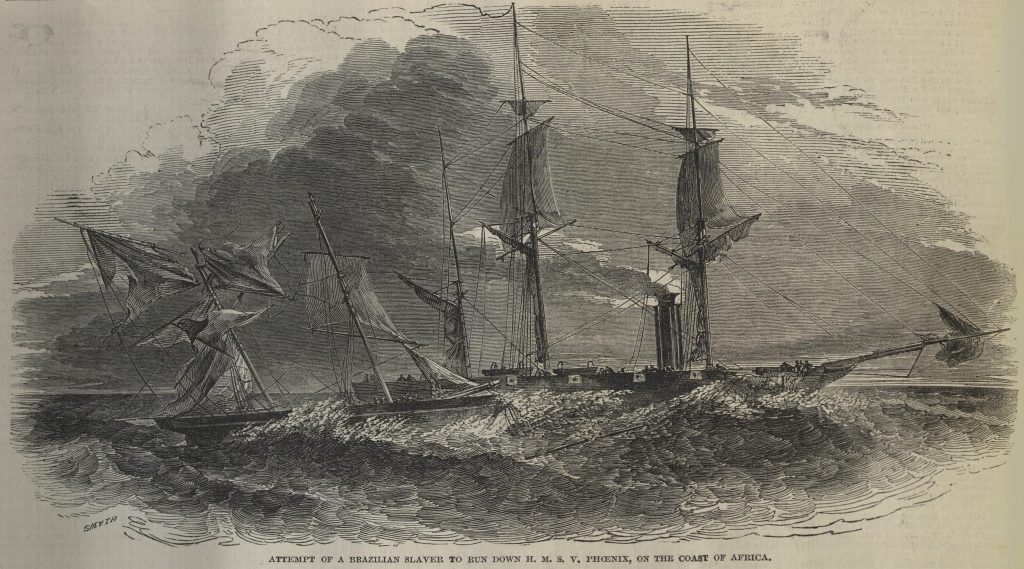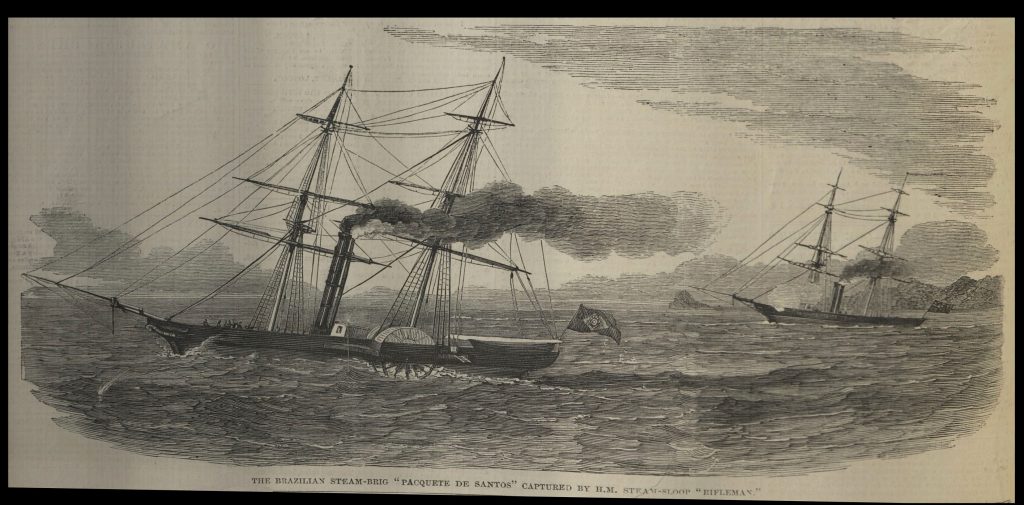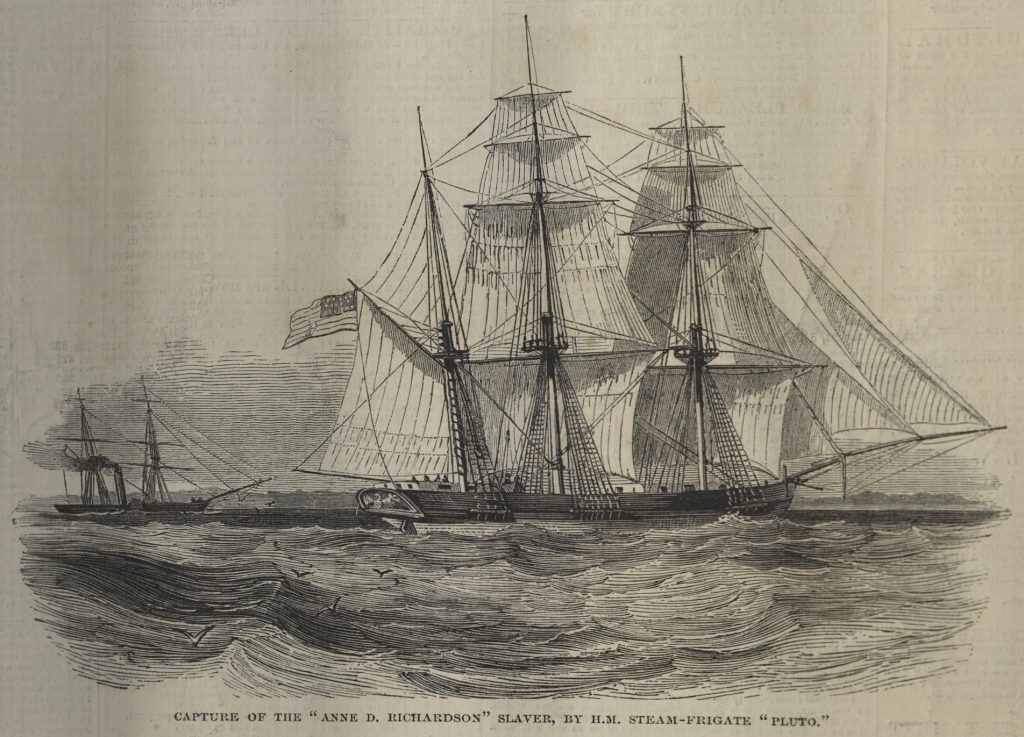The suppression of the slave trade also involved efforts to make treaties with African rulers. Mami Lahai was the King of Malaghea, a Mandingo polity. The Illustrated London News, 11 August 1855. Courtesy of University of Missouri Libraries.
Read More
The H.M.S Linnet was one of the many British naval vessels responsible for capturing slave ships. The Illustrated London News, 18 June 1853. Courtesy of University of Missouri Libraries.
Read More
British Naval Vessels such the ‘Teaser’ attempted to pressure African villages that they believed were involved in the slave trade. When efforts at persuasion failed, they were often prepared to use violent force. The Illustrated London News, 14 May 1853. Courtesy of University of Missouri Libraries.
Read More
Two slaves ships were destroyed off the coast of the island of Querimba. Two days later, the same British crew attempted to capture another Spanish slaver. After a 42 hour chase, the British ship gave up in its chase. The Illustrated London News, 28 February 1852. Courtesy of University of Missouri Libraries.
Read More
The British engaged in multiple wars with the Xhosa in South Africa. This battle was one of the most decisive Xhosa defeats. Although slavery had been abolished in South Africa, some of the British settlers were reintroducting elements of labor coercion, as they gained more control over the native population. The Illustrated London News, 13 […]
Read More
The H.M.S Rifleman was one of the many British vessels patrolling the Atlantic Ocean for slave ships. The Illustrated London News, 14 December 1850. Courtesy of University of Missouri Libraries.
Read More
British naval vessels chasing slavers in the high seas was a common feature in the suppression period. Sometimes, however, they overstepped their jurisdiction and invaded other nations’ waters. The image shows one such instance, where H.M.S. Cormorant invaded Brazilian waters in pursuit of slaves seeking harbor at the Port of Paranaguá. The Illustrated London News, […]
Read More
Encounters between slavers and British naval vessels were common in the Atlantic, but rarely did a slaver try to run down a man of war. The following illustration shows one of such encounter between a Brazilian slaver and H.M.S. Phoenix. The Illustrated London News, 24 August 1850. Courtesy of University of Missouri Libraries.
Read More
Brazil was the largest slave trading power in the first half of the nineteenth century. By that time, many Brazilian slavers had incorporated some of the latest naval technologies of the time, such as steam power. The image shows H.M.S. Rifleman in pursuit of the Brazilian steamer Paquete de Santos. The Illustrated London News, 6 […]
Read More
The presence of American ships in the slave trade increased significantly in the mid-nineteenth century. Not only did the American flag protected slavers from being intercepted by British naval ships, but several slavers from Portugal, Brazil, and other countries imported and used ships built in the United States in their activities. The image shows H.M.S. […]
Read More

